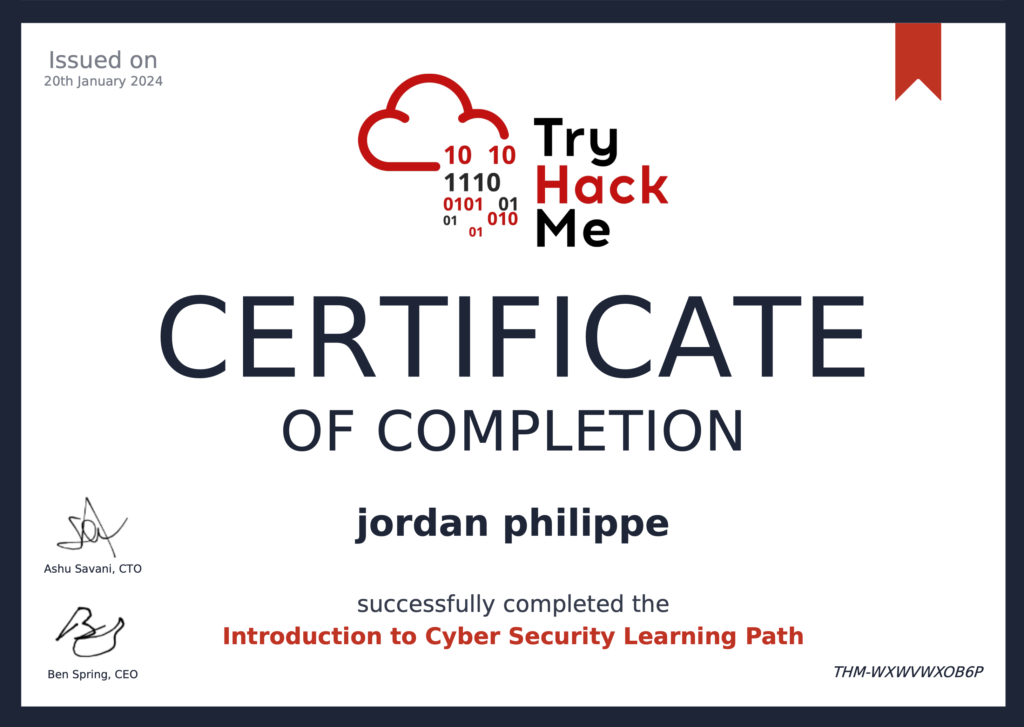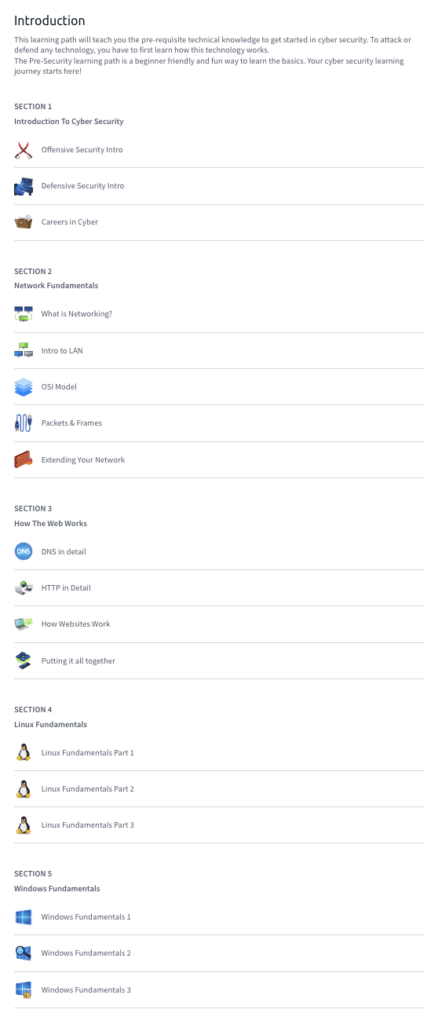
I Just Finished TryHackMe’s Introduction to Cybersecurity – Here’s What I Learned
Cybersecurity has always been something I found interesting, but I never really knew where to start. There’s so much information out there, and without a structured approach, it’s easy to feel lost. That’s why I decided to take on TryHackMe’s Introduction to Cybersecurity course—it seemed like the perfect way to build a solid foundation, and now that I’ve completed it, I wanted to share my experience.
If you’re someone who’s curious about cybersecurity but don’t know where to begin, this might help you get a sense of what to expect.
Why I Took This Course
We hear about cyber threats all the time—data breaches, phishing scams, ransomware attacks—but what does that actually mean? More importantly, how do these attacks happen, and how can we prevent them?
I wanted to go beyond just reading about cybersecurity and actually get hands-on experience with real-world attacks and defenses. That’s exactly what this course provided.
What I Learned
🔹 Understanding Cyber Threats
One of the first things I learned was just how many different ways an attack can happen. Some of the biggest threats include:
• Phishing – Emails or messages designed to trick people into giving up personal info.
• Malware – Viruses, ransomware, and other malicious software that can take over systems.
• Man-in-the-Middle Attacks (MitM) – Where attackers intercept data between two parties without them knowing.
It was eye-opening to see just how easy it can be for someone to fall for a well-crafted phishing attempt or how a small security mistake can leave an entire system vulnerable.
🔹 Networking & Security Basics
I always knew networking was important, but this course really helped me connect the dots on how the internet works and why security measures like firewalls, VPNs, and encryption matter.
Some key things I learned:
✅ The difference between IP addresses, DNS, and HTTP/HTTPS
✅ How firewalls and VPNs protect data from attackers
✅ Why encryption is a game-changer for keeping information secure
Basically, if a network isn’t properly secured, it’s wide open for attackers to exploit.
🔹 Securing Operating Systems (Windows & Linux)
Another major focus was how operating systems handle security—especially Windows and Linux.
I got hands-on experience with:
• File permissions – Who can access what files and why that matters
• User management – The importance of limiting privileges (never use admin when you don’t need to!)
• Basic scripting – How to automate security tasks in Linux
It became really clear that weak configurations are one of the biggest ways attackers gain access. Simple things like default passwords or giving users unnecessary admin rights can be an open door for hackers.
🔹 Digital Forensics & Incident Response
This was one of the most interesting parts for me. Instead of just preventing attacks, this section was all about detecting and responding to security incidents.
I learned how to:
🔹 Analyze system logs to find signs of an attack
🔹 Detect suspicious activity in network traffic
🔹 Understand how cybersecurity teams investigate breaches
Security isn’t just about stopping attacks—it’s also about knowing how to react when something goes wrong.
Hands-On Learning: Capture The Flag (CTF) Challenges
One of the coolest parts of this course was solving real-world cybersecurity challenges. TryHackMe uses Capture The Flag (CTF) exercises, which means instead of just reading theory, you actually apply what you’ve learned to solve problems.
For example:
✅ Scanning networks for vulnerabilities using Nmap
✅ Cracking passwords and learning how attackers gain access
✅ Analyzing suspicious files and logs to identify threats
This hands-on approach made everything click in a way that just reading never could.
Why This Matters & Course Layout

Before taking this course, I had some knowledge about cybersecurity, but I didn’t fully understand how everything connected. Now, I feel way more confident about:
• Recognizing security threats
• Understanding how attacks happen
• Defending systems against vulnerabilities